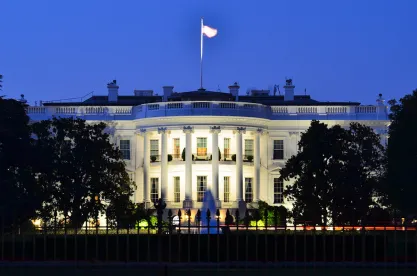On April 20, 2022, the White House Council on Environmental Quality (CEQ) published a final rule rolling back minor regulatory changes to the National Environmental Policy Act (NEPA) review process that it had promulgated in 2020. The new rule reverts to the language of CEQ’s original 1978 NEPA regulations but otherwise does not substantially alter the regulatory landscape. This is the first of an anticipated two-step process as identified in CEQ’s October proposed rule. The next regulatory proposal is expected to “more broadly revisit” the 2020 regulations and propose further changes to promote environmental justice, climate change, and other Biden administration “objectives.”
The Phase 1 final rule attracted significant public comment and media coverage, but in practice, it should not meaningfully affect NEPA reviews. The regulatory changes themselves are very confined. The final rule features three main components:
Purpose & Need/Alternatives
NEPA reviews of proposed federal agency actions begin by defining a statement of purpose and need and identifying a reasonable range of alternatives. In doing so, agencies routinely give substantial weight to the project proponent’s objectives, rather than reinventing what is proposed. The 2020 rule had codified that longstanding policy by adding language expressly directing federal agencies to consider their statutory authority and the goals of the project proponent when formulating statements of purpose and need and identifying a reasonable range of alternatives that could meet the purpose and need. The new final rule deletes reference to the applicant’s goals to avoid perceived “bias” and restore “flexibility.” Yet, the final rule does not prohibit agencies from considering the applicant’s goals, and instead recognizes they remain “important.” The final rule also retains the fundamental NEPA concept that a “reasonable” alternative must “meet the purpose and need for the proposed action.”
Individual Agency NEPA Regulations
While CEQ’s regulations apply across the federal government, individual federal departments and agencies also have their own rules and procedures for implementing NEPA specific to the particular types of actions they typically undertake. CEQ oversees these agency efforts. To promote consistency in agency NEPA reviews, including those involving multiple agencies, the 2020 rule sought to restrict agencies from adopting requirements stricter than CEQ’s rules. The new Phase I rule removes this ceiling. To be clear, this change does not allow agency-specific NEPA rules and procedures to conflict with CEQ’s regulations, but it does increase the potential for inconsistencies in the application of NEPA procedures across federal agencies. That said, many federal agencies developed their own NEPA regulations and procedures years ago, did not amend those regulations and procedures in response to the 2020 rule, and are not expected to substantially alter their procedures at least while CEQ is still developing its future Phase 2 rule.
Effects
The 2020 rule simplified the regulatory definition of “effects” or “impacts” of the proposed action and alternatives to eliminate separate terms for “direct,” “indirect,” and “cumulative” effects, and to clarify which effects are “reasonably foreseeable.” It specifically provided that a “but for” causal relationship is insufficient to attribute an effect to a proposed project, while excluding potential effects from analysis “if they are remote in time, geographically remote, or the product of a lengthy causal chain” or if they are beyond the agency’s control. But the 2020 rule did not preclude consideration of cumulative impacts or climate change and allowed for their incorporation as part of the baseline for the “no action” alternative. The new Phase 1 rule simply reverses those minor changes including restoring the separate “effects” definitions. This reversion may foster more expansive indirect and cumulative impacts analysis in NEPA documents akin to the analyses developed before the 2020 rule. However, particularly because the 2020 rule did not overrule case law overwhelmingly requiring consideration of cumulative impacts and climate change, the practical implication of these changes should be minimal.





 />i
/>i

